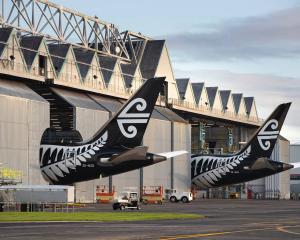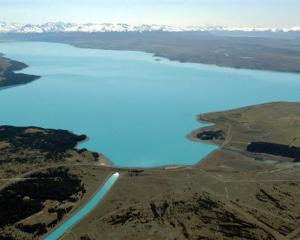First there was carbon foot-printing, then food miles, and soon the world's consumers will be told how much water was used to produce their food.
Scientists say New Zealand exporters have little to fear from what are known as "virtual water measures", and the low rate of exploitation could be a competitive advantage over other food producers.
Virtual water measures calculate the volume of water used to produce a product or service.
A cup of coffee, for example, requires 140 litres of water, mostly to irrigate the coffee plant.
Plant and Food Research group leader of systems modelling Brent Clothier told a Science Media Centre conference yesterday each year New Zealand exported 500 million cu m of water to the United Kingdom through exported products.
This equated to a water-stress index, or the percentage of New Zealand's total available water used, of 0.8%.
Dr Clothier said countries such as Italy and Spain, which exported similar volumes of water to the UK through their exports, had a water-stress index between 60% and 80%.
Zespri innovation manager Alistair Mowat said a water measure could prove favourable for New Zealand exporters.
"For New Zealand, it is a new area, and potentially it provides us with a competitive advantage," he said.
Dr Clothier said large global retailers Wal-Mart, Tesco, Sainsburys and Marks and Spencer were all looking at environmental labelling of food, including a virtual-water footprint, and some had said water use would be a factor in deciding which suppliers they used.
Formal protocols were being established to develop a universally accepted formula for measuring water consumption, but that was five years away, he said.
Water New Zealand chief executive Murray Gibb said depleted water resources caused by a growing population, urbanisation and changing diets could become a global problem in 20 years.
He agreed that New Zealand would rate favourably with its water use in food production, saying just 2% of water run-off was harvested for use compared with the inter-national average of 50%.
Mr Gibb said Canterbury, considered by many New Zealanders as an area where water was being exploited, also compared well, with just 8% of water flowing over the plains or in aquifers being harvested for agriculture.
Mr Mowat said water foot-printing was two to three years behind carbon footprinting, and the next step for New Zealand was to develop a water-footprint measure for a horticultural crop and then look at the risks and opportunities that might come about.
Mr Mowat said there was a risk that consumers could be bombarded with a variety of environmental measurements for carbon, food miles and water.
However, carbon foot-printing and work being done by the large retailers would give a lead on how to communicate the information to consumers, he said.












